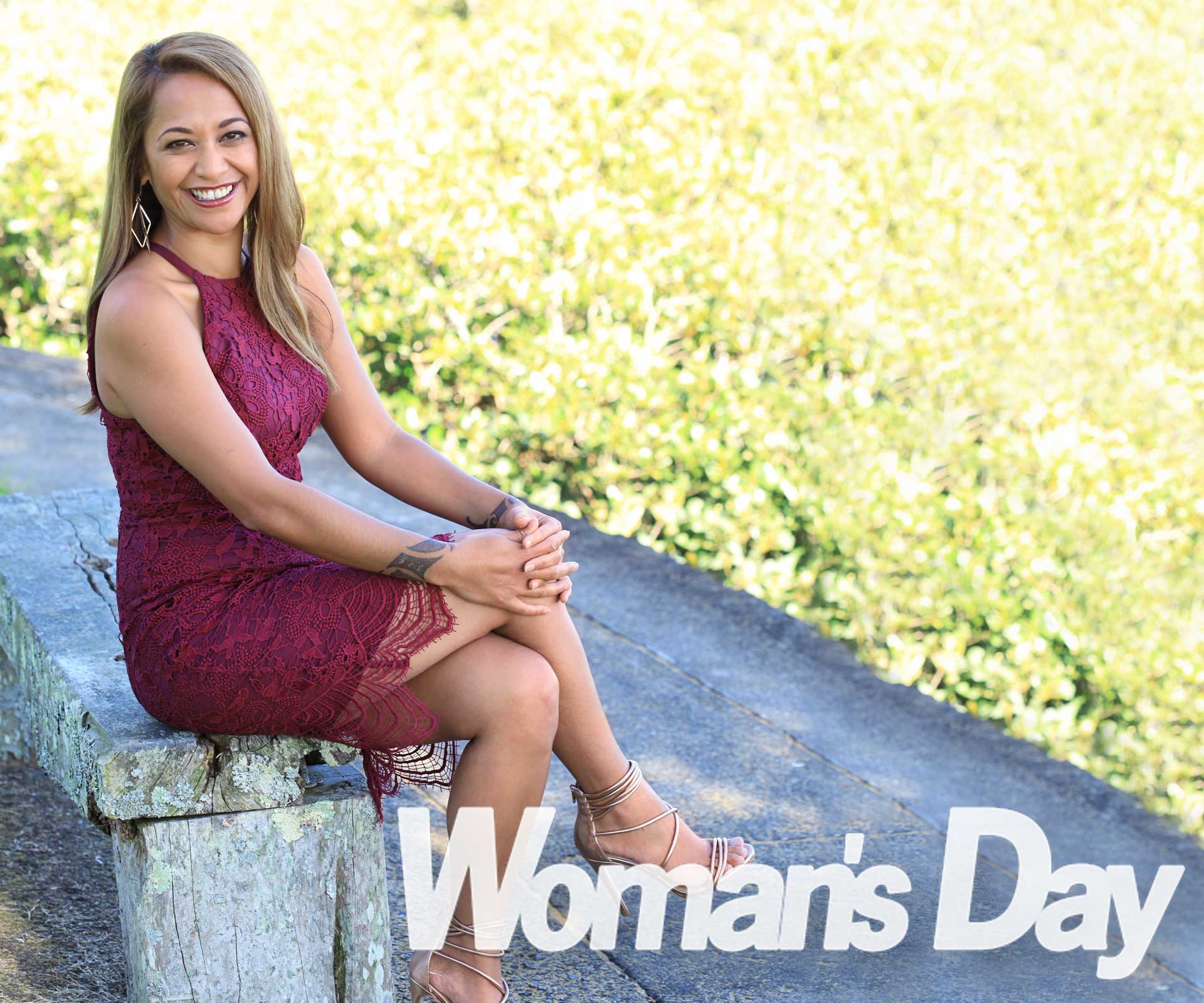Oriini Kaipara recalls pretending to be a news presenter in front of her classmates as a kid, standing before a make-believe camera as her bulletins flowed in te reo.
For friends and family of the Maori mum-of-four, it’s no surprise she became an award-winning journalist.
And now she’s hit headlines herself as the first person with a moko kauae to read mainstream news on TV.
“I was a boisterous, inquisitive, know-it-all little girl,” laughs Oriini, 36, who made her 1 News debut filling in as a midday presenter last month. “Then I had two of my kids by 17, went to film school because it was a one-year course, and kind of fell into journalism after that.”
The Whakatane-born presenter’s journalism experience includes working on Maori radio station Ruia Mai and presenting Maori Television’s Native Affairs show.
“Reading the mainstream news was a dream and I was so excited because it represents beyond me,” the Te Karere journalist tells. “It’s for all of us – Maori and all of New Zealand.”

The gorgeous star, looking right at home on her 1 News debut, says her moko “reminds me of who I am”.
West Auckland-based Oriini was brought up fully immersed in te reo and Maori traditions as a child, attending Maori language schools until her late teens. As one of Aotearoa’s most well-known Maori reporters, one of Oriini’s missions now is to normalise her language and culture with the help of the moko kauae she got in January this year.
Oriini – who is of Tuhoe, Ngati Awa, Tuwharetoa and Ngati Rangi descent – spent nine months planning the traditional Maori tattoo, which is inked onto a woman’s chin and lips.
“I drove down to Te Teko, in the Bay of Plenty, where my dad’s side comes from,” explains the single mum of Paetawhiti, 19, Te Aomihia, 18, Nikau, 13, and seven-year-old Ngarongokahira.
“We went to my marae Kokohinau and met artist Turumakina ‘Tu’ Duley, who is also a distant relative.”
She chose Australian-based Tu because of the connection to whakapapa, or family, as well as his talent.
“I love his work and he’s been doing it for quite some time,” says Oriini, who made headlines in 2017 when a DNA test showed she’s 100% Maori.
“He did a full facial moko on Mark Kopua, who is well-known in Maoridom for his own work and was Tu’s teacher.”

With her kids (from left) Te Aomihia, Nikau, Ngarongokahira and Paetawhiti.
When she contacted Tu in early 2018, a story had hit the news about a pakeha woman getting a moko kauae.
“There was a big uproar about her getting one as a pakeha woman, and her Maori husband giving her permission,” tells Oriini, who won Best Maori Affairs Reporter last year.
“I’m not a judgemental person so I didn’t want to throw stones at something I didn’t know. But it got me thinking.”
Oriini decided that in order to have a true stance on the topic, she’d need to go through the process to truly understand.
“It sparked the desire in me to get a moko kauae. Before that, I was actually anti getting one for myself. There was no way in hell,” she laughs. “It was more of a shock to my inner circles when they found out – and they didn’t believe I’d go through it!”
Only one other person in her family had a moko, an aunty on her dad’s side, which made Oriini question whether her getting it was appropriate.
“I was wary of what it would mean if I got one,” she confesses. “I thought, ‘Why do I deserve it and why should I have it if they don’t?'”
But her family told her to go ahead. She adds, “For me, a moko is a mark of huge honour and a mark of prestige, and with that comes huge responsibility. It signals a commitment to my whakapapa, iwi, marae and language.”

On the day she had the tattoo done, Oriini took her eldest daughter with her.
She explains, “I’d originally asked for the traditional chisel, but Tu said it would hurt way more and take a lot longer, so he did it with the gun. I was so glad he talked me out of that!”
Having Te Aomihia with her for the tattooing was a special part of the occasion. “She was really moved and proud to share the whole process, knowing we’re all part of the bigger picture.”
Fifty of Oriini’s family and friends she’d known since childhood were waiting at the marae, singing and playing guitar, and sharing food.
“There were lots of tears and I think I had the most, but they weren’t from pain,” she recalls. “It was more the spiritual connection and the honour because in my generation, I’m the first person to get it.”
Since her mainstream news debut on November 28, Oriini’s presented the midday news a couple more times and hopes it’ll potentially lead to a more permanent stint.
“There have been a lot of well-wishers and positive vibes,” she shares. “Having a moko doesn’t change who I am and it means much more than a tattoo on my face. It helps anchor me because it reminds me of who I am.”


